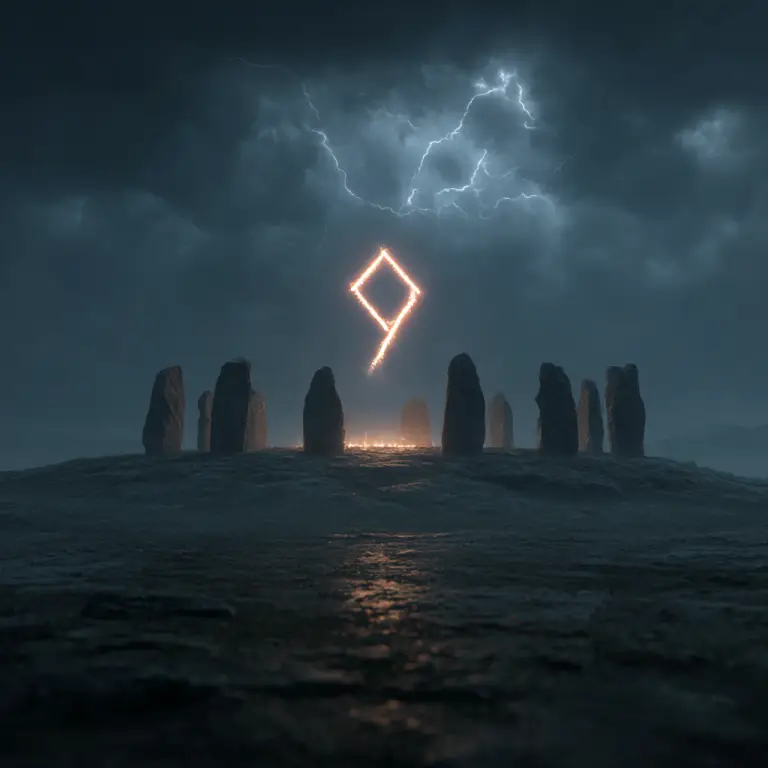In Viking Age religion the number nine was regarded as sacred and filled with symbolic meaning. It represented completeness, cosmic balance and the cycles of life, death and rebirth. For this reason many sacrifices were made in sets of nine. To the Vikings this was not simply tradition but a powerful act that bound human ritual to the divine order of the universe.
The mythology itself placed nine at the centre of existence. The Norse cosmos was structured around Yggdrasil, the great ash tree, which linked together nine worlds. Each realm had its own purpose and inhabitants, from the shining halls of the gods in Asgard to the shadowed land of the dead in Hel. Nine was therefore seen as a number that encompassed all creation.
Odin, the chief of the gods, made the most famous sacrifice associated with nine. He hung upon Yggdrasil for nine nights, pierced by his own spear, in order to gain the wisdom of the runes. This self-offering was remembered in ritual, showing that enduring suffering for nine days or giving nine offerings created a bond with the divine and opened the path to knowledge and power.
Sources from medieval writers give accounts of how this belief was expressed in Viking sacrificial practice. Adam of Bremen, writing in the eleventh century, described the great temple at Uppsala in Sweden. He wrote that every ninth year a great festival was held in which nine of every living creature were sacrificed, including men. The bodies were hung in a sacred grove near the temple as an offering to the gods. This grisly spectacle was meant to secure the favour of the gods for harvests, fertility and success in battle.
Snorri Sturluson, writing in the thirteenth century, also preserved the importance of nine in the sagas and Eddas. He repeated the tale of Odin’s nine-night ordeal and spoke of magical practices and rituals that followed cycles of nine. In the Ynglinga Saga he described how sacrifices of men and animals were offered to Odin, echoing the accounts from Uppsala.
Even beyond large festivals, the number nine appeared again and again in Viking ritual and poetry. Heroes in sagas often swore oaths over periods of nine nights, or performed magical rites for nine days. In Voluspá, one of the most important poems of the Poetic Edda, references to nine appear repeatedly, from nine worlds to nine giant maidens who shape destiny.
For the Vikings, then, to sacrifice nine of everything was to mirror the structure of the cosmos itself. By repeating the sacred number they believed they were strengthening their connection with the gods, echoing the deeds of Odin and ensuring that their offerings were complete and acceptable. It was not the number alone that mattered but what it represented: totality, divine order and the eternal cycle of existence.
Today the idea of nine as a sacred number remains one of the clearest insights into how the Vikings understood their universe. It reveals a people who looked for meaning in patterns, who linked ritual directly to myth, and who sought to keep their world in harmony with the unseen powers they believed shaped their fate.
